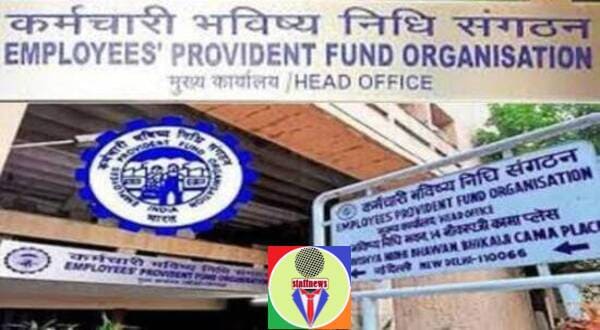Female Employees under EPFO – A Parliamentary Inquiry into Job Creation, Gender Parity, and Social Security Initiatives vide Lok Sabha Q&A No. 143 answer date 04.12.2023
GOVERNMENT OF INDIA
MINISTRY OF LABOUR AND EMPLOYMENT
LOK SABHA
UNSTARRED QUESTION NO. 143
TO BE ANSWERED ON 04.12.2023
FEMALE EMPLOYEES UNDER EPFO
143. DR. KRISHNA PAL SINGH YADAV:
PROF. RITA BAHUGUNA JOSHI:
DR. SHRIKANT EKNATH SHINDE:
DR. SUJAY RADHAKRISHNA VIKHE PATIL:
Will the Minister of LABOUR AND EMPLOYMENT be pleased to state:
(a) whether formal job creation for women in India has increased significantly during the last five years, if so, the details thereof;
(b) the details of specific measures and policies implemented by the Ministry to encourage greater gender parity and inclusivity in the labour force;
(c) whether the Government would provide insights into the impact of the e-Shram portal, dedicated to unorganized workers, on women’s participation;
(d) the efforts being made to enhance registration and social security coverage for women in the unorganized sector; and
(e) whether the net addition in EPFO subscriptions serve as an indicator of the formalization of the job market for women and the expansion of social security benefits for the organized and semi-organized sector workforce, if so, the details thereof?
ANSWER
MINISTER OF STATE FOR LABOUR AND EMPLOYMENT (SHRI RAMESWAR TELI)
(a): The Employees’ Provident Fund Organisation (EPFO) publishes Payroll data every month whereby the number of subscribers joining Employees’ Provident Fund (EPF) for the first time through Aadhaar validated Universal Account Number (UAN), existing subscribers exiting and subscribers who exited earlier rejoin as subscribers is reported to arrive at net Payroll. The published figures provide the net new enrollments in EPFO across the country in age-slab wise, industry wise, state-wise and gender wise. The details of EPFO Net Payroll Additions of Female Subscribers since September, 2017 are as under :-
| Financial Year | Net Payroll Additions (Female Subscribers) |
| 2017-18 (from September, 2017) | 2,32,785 |
| 2018-19 | 13,05,172 |
| 2019-20 | 15,93,614 |
| 2020-21 | 13,98,080 |
| 2021-22 | 26,18,728 |
| 2022-23 | 28,69,688 |
Note: The Net Payroll Data published by EPFO is provisional as updation of employees’ records is a continuous process and gets updated in subsequent month(s).
(b): The Equal Remuneration Act, 1976 provides for payment of equal remuneration to men and women workers for same work or work of similar nature without any discrimination. The Equal Remuneration Act, 1976 has been subsumed in the Code on Wages, 2019 which also provides that there shall be no discrimination in an establishment or any unit thereof among employees on the ground of gender in matters relating to wages by the same employer, in respect of the same work or work of similar nature done by any employee. However, the Code on Wages, 2019 is yet to come into force.
Under the Maternity Benefit (Amendment) Act, 2017, the following provisions/benefits are available:-
- Paid Maternity leave/benefit has been increased from 12 weeks to 26 weeks.
- Facility of crèche is mandatory if 50 or more employees are working in the establishment.
- Medical Bonus of Rs.3500/- if no pre-natal confinement and post- natal care is provided by the employer free of charge.
- Enabling provision for light work for specified period during pregnancy.
- Immunity from dismissal during absence due to pregnancy and no deduction of wages of woman entitled to maternity benefit.
- Enabling provision for facility of work from home, if the employer and employee so agrees, in addition to the maternity leave.
The Maternity Benefit Act, 1961 has been subsumed in the Code on Social Security, 2020, which is yet to come into force.
The Code on Occupational Safety, Health & Working Conditions (OSH), 2020 has special provision relating to employment of women. As per this, women shall be entitled to be employed in all establishments for all types of work, with their consent, before 6 a.m. and beyond 7 p.m. subject to conditions relating to safety, holidays and working hours or any other conditions to be observed by the employer as may be prescribed by the appropriate Government. However, the Code on OSH, 2020 is yet to come into force.
Further, to enhance the employability of female workers, the Government is providing training to them through a network of Women Industrial Training Institutes, National Vocational Training Institutes and Regional Vocational Training Institutes.
(c) & (d): Ministry of Labour & Employment launched eShram portal (eshram.gov.in) on 26th August, 2021 for creation of a comprehensive National Database of Unorganised Workers seeded with Aadhaar. eShram portal is meant to register and support the unorganised workers by providing them a Universal Account Number (UAN). eShram captures details of workers such as name, address, occupation, educational qualification, skill type etc. As on 27th November, 2023, over 29.19 crore unorganised workers have registered on eShram portal under 30 broad occupation sectors and around 400 occupations. Out of total registration on eShram, approximately 15.45 crore registrants i.e. 52.92% are female.
(e): The Employees’ Provident Funds and Miscellaneous Provisions Act, 1952 is applicable on the factories and establishments employing 20 or more persons engaged in any of the 197 class of establishments/schedule of industries and employees with monthly EPF wages up to Rs.15,000/- only are statutorily required to be enrolled as members. The monthly net payroll data of EPFO indicates the pattern and trends in employment and job creations in the organized/formal sectors of economy.
****

COMMENTS